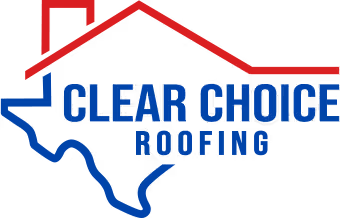When it comes to replacing a roof, many homeowners wonder about the timeline involved. Most roof replacements can be completed in one day for an average-sized home, while larger structures may take two to three days. Various factors influence this duration, including the size of the roof, complexities involved, and the type of materials used.
At Clear Choice Roofing, we understand the importance of transparency and efficiency throughout this process. Your comfort and satisfaction are our priorities, and our experienced team is dedicated to ensuring a smooth experience from start to finish. Whether you're dealing with a simple replacement or a more intricate installation, we provide the expertise to handle your project with care and precision.
Knowing how long it will take to replace your roof can help you prepare not just logistically but also mentally. Trusting professionals, like those at Clear Choice Roofing, ensures you get a quality job done within your expected timeframe. Let's explore the various factors that affect how long your roofing project may take.
Assessing the Need for Roof Replacement
Knowing when to replace your roof is crucial for maintaining the safety and integrity of your home. Understanding key indicators can guide you in making informed decisions.
Determining Roof Age
The first step in assessing your roof's condition is determining its age. Most roofs have a lifespan ranging from 20 to 30 years, depending on the materials used. If your roof is nearing or has surpassed this age, it’s essential to evaluate it closely.
Keep in mind that roofs made of asphalt shingles generally last around 20 years, while metal or tile roofs may last longer. Regular maintenance can extend your roof's life, but eventually, roof age becomes a significant factor in deciding if replacement is necessary. It’s best to consult specialists, like those at Clear Choice Roofing, for an expert assessment.
Identifying Damage and Missing Shingles
Physical damage is a clear sign that your roof may need replacement. Look for missing, cracked, or curling shingles, as these can expose your roof to leaks and further deterioration.
Check the entire roof area, including valleys and eaves, as these spots are often prone to damage. If you notice granules from shingles in your gutters, it can indicate significant wear. Keeping track of any visible damage helps you evaluate whether a replacement is imminent. If you have doubts, a professional inspection can provide clarity on the issue.
Conducting a Thorough Roof Inspection
Conducting regular roof inspections is essential for spotting problems early. Inspect your roof at least twice a year and after severe weather events. Look for signs of wear, such as sagging, discoloration, or mold, which can indicate underlying issues.
Pay close attention to areas around chimneys, vents, and skylights where leaks are likely to occur. If you feel uncomfortable inspecting your roof yourself, consider hiring experts like Clear Choice Roofing for a comprehensive evaluation. Their trained professionals can identify potential problems and recommend solutions tailored to your needs.
Choosing Roofing Materials
Selecting the right roofing materials is crucial for the longevity and performance of your roof. Each type offers distinct advantages and considerations, making it essential to understand your options.
Comparing Asphalt Shingles and Tiles
Asphalt shingles are among the most common roofing materials due to their affordability and ease of installation. They typically last between 15 to 30 years, depending on the type chosen. Architectural shingles offer enhanced durability and aesthetics compared to traditional 3-tab designs.
On the other hand, tiles, particularly clay or concrete, provide a longer lifespan of 50 years or more. They are heavier, requiring additional structural support, and are more expensive upfront. However, tiles excel in terms of resistance to extreme weather and fire. Choosing between asphalt shingles and tiles involves balancing upfront costs with long-term benefits and maintenance.
Understanding the Benefits of Metal Roofing
Metal roofing has gained popularity for its durability and energy efficiency. It lasts 40 to 80 years, depending on the specific material, and is resistant to wind, hail, and fire. Metal roofs reflect sunlight, helping to reduce cooling costs, making them an energy-efficient choice.
They come in various styles and colors, appealing to different aesthetics. While the initial investment is higher than asphalt shingles, the longevity and lower maintenance needs often make it a worthwhile long-term investment. Clear Choice Roofing can guide you in selecting the right metal roofing option that fits your needs.
Considering Wood Shingle Aesthetics
Wood shingles offer a classic appeal, enhancing the beauty of your home. They generally last between 30 to 50 years, depending on the wood type and maintenance. Cedar is a popular choice due to its natural resistance to moisture and insects.
However, wood shingles require more maintenance than other materials to prevent decay and warping. They also have a higher susceptibility to fire unless treated with fire-retardant coatings. If you're looking for a distinctive and natural look, wood shingles can be a great option, but ensure you are prepared for proper upkeep.
Planning the Replacement Process
Proper planning is essential for a successful roof replacement. By paying attention to scheduling, site accessibility, and communication with your roofing contractor, you can enhance the entire process.
Scheduling and Weather Considerations
Timing is crucial when replacing your roof. Ideally, you should choose a period with mild weather conditions to avoid interruptions. Look for a window of 1 to 2 weeks when forecasts predict minimal precipitation or extreme temperatures.
Consult your roofing contractor to develop a flexible schedule. Having flexibility allows adjustments if unexpected weather changes occur.
Consider the season as well. Spring and early fall are generally the best times for roofing projects in many regions. If you’re working with Clear Choice Roofing, they can help you select the ideal timeframe for your needs.
Site Accessibility and Preparation
Accessibility to your property plays a significant role in the efficiency of the roof replacement. Ensure that your driveway and surrounding areas are clear of obstacles like vehicles, furniture, and landscaping. This makes it easier for the roofing crew and equipment to access the site.
Prepare your home for the project by moving items away from the walls, especially in attic spaces or rooms directly beneath the roof. This will help protect your belongings from dust and debris during removal and installation. Clear Choice Roofing can guide you on best practices for site preparation to ensure a smooth process.
Communication with Your Roofing Contractor
Strong communication with your roofing contractor is key to a successful project. Clearly convey your expectations, timeline, and any concerns you may have regarding the process. Regular updates from your contractor will keep you informed about the project’s progress and any unexpected changes.
Don't hesitate to ask questions. A reliable contractor will welcome inquiries and provide transparent answers. Establishing trust and open lines of communication with Clear Choice Roofing will lead to a more collaborative and efficient roof replacement experience.
Understanding Roof Replacement Costs
When considering a roof replacement, costs can vary significantly based on various factors. Understanding these elements can help you prepare for the financial investment required in this essential home improvement.
Estimating Based on Roof Size
The size of your roof is one of the most influential factors affecting replacement costs. Roof size is typically measured in squares, where one square equals 100 square feet. For example, a 2,000-square-foot roof is 20 squares.
As a rough estimate, homeowners can expect to pay between $3,000 to $5,000 for every 10 squares. Complex roof structures, such as those with multiple angles or features, may also increase labor time and material costs. Working with a trusted contractor like Clear Choice Roofing can provide you with a precise estimate based on your specific measurements and needs.
Material Costs and Options
The materials selected for your roof significantly influence overall costs. Common options include asphalt shingles, metal, tile, and slate, with prices varying accordingly.
- Asphalt shingles tend to be the most affordable, averaging $90 to $100 per square.
- Metal roofs can range from $150 to $600 per square, depending on the type and finish.
- Tile and slate materials are often at the higher end, costing upwards of $500 per square.
Choosing a durable and energy-efficient option can enhance your home’s value. Discussing your options with Clear Choice Roofing ensures you find the best material tailored to your budget and aesthetic preferences.
Maintaining Your New Roof
Caring for your new roof is essential to prolong its lifespan and maintain its functionality. Regular maintenance will protect your investment and ensure it withstands the elements over time. Proper attention can save you from costly repairs in the future.
Implementing Regular Maintenance
Regular maintenance is crucial for a long-lasting roof. Schedule inspections at least twice a year, ideally in spring and fall. These inspections allow you to identify potential issues early, such as damaged shingles or accumulated debris.
Be sure to clear the area around your roof, including gutters and downspouts, to prevent water buildup. A clogged gutter can lead to water damage and weaken your roof's structure.
Additionally, keep an eye out for signs of wear and tear. Address issues like loose or missing shingles immediately to prevent further damage. Using a reputable service like Clear Choice Roofing for your inspections can further ensure that your roof is in optimal condition.
Long-Term Savings through Proper Care
Investing time in maintenance can yield substantial long-term savings. Well-maintained roofs are less likely to require premature replacement, which can be expensive. By monitoring your roof's condition and addressing issues quickly, you can avoid larger repairs down the line.
Consider the materials used on your roof as well. Shingle roofs require care adjustments depending on their specific needs. For example, choosing high-quality shingles can improve durability and reduce ongoing maintenance costs.
Utilizing professional services from Clear Choice Roofing ensures that your maintenance routines are both effective and aligned with best practices. Their expertise can help maximize your roof's lifespan and efficiency, ultimately leading to significant savings.
Frequently Asked Questions
When considering a roof replacement, you may have several pertinent questions. Understanding the duration, costs, and processes involved can help you make informed decisions. Here are some common queries related to roof replacement timelines and logistics.
How long does it typically take to replace a roof on a residential property?
Most residential roof replacements can typically be completed in a single day. However, the specific timeframe may range from one day to a week, depending on factors like the type of roofing materials used and the home’s structural complexity.
What is the average lifespan of a new roof before replacement is necessary?
Generally, a new roof can last anywhere from 15 to 30 years, depending on the materials. For instance, asphalt shingles may last about 20 years, while metal roofs can extend beyond 30 years with proper maintenance.
How many hours do roofing teams usually work on a project in a single day?
Roofing teams typically work 8 to 10 hours a day on replacement projects. Weather conditions and the size of the crew can influence the total working hours.
Does the complexity of a roof affect the duration of the replacement process?
Yes, the complexity of a roof significantly impacts the duration of the replacement process. Roofs with multiple facets, steep pitches, or intricate designs may require more time and careful attention compared to simpler structures.
Are roof replacements generally covered by homeowners insurance, particularly for older roofs?
In many cases, homeowners insurance may cover roof replacements if damage is due to a covered peril, such as storms or fire. Verify your policy for specific coverage concerning older roofs, as depreciation may affect claims.
What factors contribute to the varying timelines for roof replacement in different states or regions?
Local building codes, climate patterns, and the availability of roofing materials can affect replacement timelines across different regions. Additionally, demand for roofing services may fluctuate seasonally, impacting project scheduling.
For reliable service and expert roofing solutions, consider Clear Choice Roofing, your trusted partner in Austin and nearby communities.



